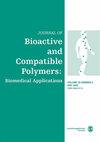胰岛素-聚乳酸立体复合物的生物相容性
IF 2.1
4区 生物学
Q3 BIOTECHNOLOGY & APPLIED MICROBIOLOGY
引用次数: 0
摘要
生物相容性对给药系统的安全性至关重要。众所周知,聚乳酸(PLA)及其与乙醇酸和己内酰胺的共聚物是安全的可生物降解植入物,也是临床使用的药物载体。这些聚合物已在临床上用于输送肽类药物,如LHRH、体生长激素和生长激素。虽然聚乳酸的安全性已得到证实,但基于聚乳酸的立体复合物与肽的生物相容性尚未得到研究。立体络合物是由对映体构型相反的两个分子形成的络合物。D-PLA 由手性单体组成,因此可以采用三维结构,即螺旋结构的镜像,从而与胰岛素形成立体络合物。在之前的报告中,我们已经证明了这种立体复合物的形成。本研究介绍了在给 Akita-/+ins2 小鼠皮下注射 17 毫克立体复合物/只小鼠后,由 D-聚乳酸-聚乙二醇(DPLA-PEG)水溶性二嵌段共聚物和胰岛素组成的立体复合物的安全性演变。在实验过程中对小鼠的血糖水平和体重进行监测,并在小鼠牺牲后对其进行生长解剖和组织病理学检查。结果表明,给小鼠注射聚合物 16 周后,小鼠体重增加正常,未发现内脏器官病变,注射部位也未出现炎症症状,只有少量巨噬细胞。因此,D-PLA-PEG/胰岛素立体复合物被认为具有生物相容性,没有不良反应。本文章由计算机程序翻译,如有差异,请以英文原文为准。
Biocompatibility of insulin-PLA stereocomplex
Biocompatibility is essential for drug delivery systems to ensure safety. Poly(lactic acid) (PLA) and its copolymers with glycolic acid and caprolactone, are known as safe biodegradable implants and carriers of drugs in clinical use. These polymers have been clinically used for the delivery of peptides, such as: LHRH, somatostatin and growth hormone. While the safety of PLA has been confirmed, the biocompatibility of PLA- based stereocomplexes with peptides has not been investigated. Stereocomplex is a complex formed by two molecules with opposite enantiomeric configuration. D-PLA consists of a chiral monomer thus can adopts a three dimensional structure which is a mirror image of a helix structure, therefore, complexes with insulin into a stereocomplex. In previous reports we demonstrated the formation of such stereocomplex. This study presents the safety evolution of a stereocomplex composed of the water soluble diblock copolymer of D-polylactic acid-co-polyetheylene glycol (DPLA-PEG) and Insulin, following subcutaneous administration of 17 mg sterecomoplex/mouse to Akita−/+ins2 mice. The mice were monitored for blood glucose levels and weight along the experiment, while growth necropsy and histopathology examination were done post sacrificing. Results demonstrated normal body weight gain with no pathological finding of an internal organ and no inflammatory signs at the injection site except of minimal macrophages, after 16 weeks following polymer administration. Hence, Stereocomplex of D-PLA-PEG/insulin is considered biocompatible with no adversity.
求助全文
通过发布文献求助,成功后即可免费获取论文全文。
去求助
来源期刊

Journal of Bioactive and Compatible Polymers
工程技术-材料科学:生物材料
CiteScore
3.50
自引率
0.00%
发文量
27
审稿时长
2 months
期刊介绍:
The use and importance of biomedical polymers, especially in pharmacology, is growing rapidly. The Journal of Bioactive and Compatible Polymers is a fully peer-reviewed scholarly journal that provides biomedical polymer scientists and researchers with new information on important advances in this field. Examples of specific areas of interest to the journal include: polymeric drugs and drug design; polymeric functionalization and structures related to biological activity or compatibility; natural polymer modification to achieve specific biological activity or compatibility; enzyme modelling by polymers; membranes for biological use; liposome stabilization and cell modeling. This journal is a member of the Committee on Publication Ethics (COPE).
 求助内容:
求助内容: 应助结果提醒方式:
应助结果提醒方式:


